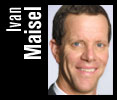 |

|
| Monday, November 18 Updated: November 22, 11:35 AM ET Nothing compares to The Play By Ivan Maisel ESPN.com |
||||||||||||||||
|
I have seen Kordell Stewart launch his Hail Mary 70 yards through the air and into the arms of Michael Westbrook. I have seen George Teague chase Lamar Thomas down, tomahawk the ball out of his arms and turn back upfield. I have seen Tim Brown return a punt for a touchdown and, four plays later, do it again. I have seen Bo Jackson and Marcus Allen, Donovan McNabb and Peyton Manning, and Wide Rights I and II. I have seen college football played indoors and out, in stadiums that no longer exist, in Honolulu and College Station and Blacksburg and Corvallis and points between. All of it amounts to a backyard game of touch compared to what I saw from the stands of Memorial Stadium in Strawberry Canyon twenty years ago today.
We left dazed and confused. I won't bore you with recounting The Play. It has been on television more than Morgan Fairchild. It has, like seminal moments do, obscured all that happened before it. No one remembers anything of Game 1 of the 1988 World Series before Kirk Gibson limped to the plate. In the case of the 1982 Big Game, as the Cal-Stanford rivalry is known, that's a shame, because the Play erased Elway's first great two-minute drive. Stanford trailed Cal 19-17 and had the ball deep in Cal territory. Elway drove the Cardinal down the field, converting a fourth-and-long, managing the clock, doing everything in Berkeley that years later would cause Cleveland Brown fans to forever spit at the mention of his name. With four seconds left, Mark Harmon kicked a field goal to give Stanford a 20-19 lead, and I remember thinking how Harmon had just certified himself into a Stanford hero. I also remember thinking, why did Stanford leave four seconds on the clock? As the chaos of The Play unfolded, concluding at our end of the field on the opposite side of the end zone, we tried to figure out what had happened. We remained confident. Surely that slapstick finish wouldn't be ruled a touchdown. The officials hustled to gather at midfield, and as they talked, the cheering of the Cal fans died down. The stadium became so quiet you could hear a heart drop. You just didn't know whether the heart would be blue and gold, or cardinal and white. The officials kept talking, and the longer they talked, the sense of foreboding in my stomach swelled like a pan of Jiffy-Pop. If they had this much to discuss, that meant there might be a touchdown. I turned to my friend and said, "This isn't good."
What happened next is as vivid in my memory as the birth of my children. The referee, Charles Moffett, signaled touchdown, and you could see the news travel. The Cal fans reacted as if they were performing the wave. Not the normal wave, which races around the field. The cheering began at field level and spread to the top of the stadium, then rebounded and gathered speed as it went back down. The momentum seemed to carry the fans over the wall and onto the field, and in a matter of moments, the stands emptied. Except where we Stanford rooters stood. No one left. No one moved. We understood that we lost. But why? How could that poor imitation of a Keystone Kops scene been a touchdown? After 10 or 15 minutes, we trudged up the stairs and out into the street. Big Game is unique among the major I-A rivalries for its lack of hate. There is a trophy (the Axe) that goes to the winner, and there is the requisite lore to go with it. The students at the losing school have stolen the Axe so often that each school now displays it in glass cases that make the window of Tiffany's look like a lemonade stand. But there is a sense of proportion. As we left Memorial Stadium, decrying the injustice of it all, Cal fans didn't gloat. They commiserated with us. Having grown up in the state of Alabama, where 30 years later any Auburn fan can get a rise out of an Alabama fan with the mere whisper of the words, "Punt Bama Punt, " the absence of ill will sticks with me to this day. We returned across the Bay Bridge to San Francisco, worn out and dispirited. The game had been the talk of the Bay Area news shows that night. In those days before SportsCenter became the Arbiter of Sport As We Know It, the budding journalist in me kept thinking about validation. I knew that none of us who saw the finish of the game would ever see its like again. But would the rest of the country understand? The next morning, at 9 a.m., I flipped on the NFL Today and Brent Musberger led with a recounting of The Play. The word had gotten out. The Play had become immortal. Twenty years ago today, Sgt. Pepper taught the Band to play. I just wish that he taught them to tackle. Ivan Maisel is a senior writer for ESPN.com. E-mail him at ivan.maisel@espn3.com. |
| |||||||||||||||
